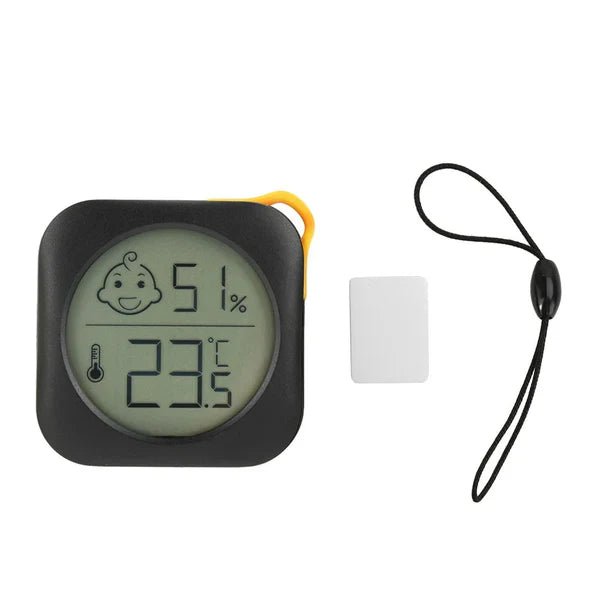
How to Use a Humidity Meter Detector for a Healthier Home & Happier Plants
Share
Introduction
Humidity might be invisible, but its effects on your comfort, health, and even belongings are impossible to ignore. Too much moisture can lead to mold, dust mites, and that unpleasant damp smell. Too little humidity can leave you with dry skin, cracked furniture, and unhappy houseplants.
That’s where a Humidity Meter Detector comes in — a simple, powerful tool that gives you the knowledge you need to take control of your indoor environment.
In this article, we’ll explore why measuring humidity matters, how to use your humidity meter effectively, and practical steps to create an ideal balance.
Why Indoor Humidity Matters
Many people think temperature is the only factor that affects indoor comfort, but humidity plays an equally big role. Here’s why:
- Comfort: The same temperature can feel hotter or colder depending on humidity levels.
- Health: High humidity encourages mold and bacteria growth, while low humidity dries out your skin and respiratory system.
- Home Maintenance: Furniture, wood floors, musical instruments, and electronics can all be damaged by improper moisture levels.
- Plants & Pets: Many houseplants and exotic pets require specific humidity ranges to thrive.
How a Humidity Meter Detector Works
A humidity meter, also known as a hygrometer, measures the percentage of water vapor in the air. Most modern digital models also display the temperature, and some can store readings over time.
Key components often include:
- Sensor: Detects the moisture in the air.
- Display: Shows the humidity level, typically as a percentage.
- Memory/Recording: Some devices log changes so you can spot patterns.
Steps to Use Your Humidity Meter Detector
-
Choose the Right Spot:
Place your meter in a central location, away from direct sunlight, vents, or windows. -
Let It Adjust:
Give your device at least 15–30 minutes to adapt to its surroundings before trusting the first reading. -
Monitor Regularly:
Check readings at different times of day — humidity often rises overnight and drops during the afternoon. -
Compare Rooms:
Move the meter to different areas to spot problem zones. -
Take Action:
Use a humidifier to raise levels or a dehumidifier/ventilation to lower them.
Ideal Humidity Levels
The sweet spot for most homes is 40–60% relative humidity.
- Below 30%: Air feels dry, can irritate sinuses, damage wood.
- Above 60%: Increases risk of mold, mildew, and dust mites.
Real-Life Applications
- For Health: Prevent dry skin, respiratory irritation, and improve sleep quality.
- For Babies & Seniors: Both age groups are more sensitive to air dryness.
- For Music Lovers: Protect wooden instruments like guitars or violins.
- For Gardeners: Track humidity in greenhouses or around delicate plants.
- For Allergy Sufferers: Reduce allergens by keeping humidity in check.
Maintaining Your Humidity Meter
- Keep the sensor clean by gently wiping it with a dry cloth.
- Avoid extreme heat or moisture exposure.
- Change batteries when the display dims.
- Calibrate periodically (some models allow manual calibration).
Tips for Adjusting Humidity
- To Increase: Use a humidifier, place water bowls near heat sources, or keep indoor plants.
- To Decrease: Improve ventilation, run a dehumidifier, or use moisture-absorbing materials.
Conclusion
Your Humidity Meter Detector isn’t just a gadget — it’s your partner in creating a healthier, more comfortable home. Whether you’re caring for family, protecting valuables, or nurturing plants, accurate humidity monitoring puts you in control.
FAQs
1. How often should I check my humidity levels?
Ideally, once or twice a day, especially during seasonal changes.
2. Can one meter cover my whole house?
Not accurately. Move it around or get multiple units for different rooms.
3. What if my readings are inconsistent?
Ensure your meter isn’t near vents, direct sunlight, or cooking areas that can temporarily spike humidity.
4. Is it safe to leave my humidity meter on all the time?
Yes, digital meters are low-energy devices designed for continuous use.
5. Do I need to calibrate it?
Some models need calibration every 6–12 months for the most accurate results.
